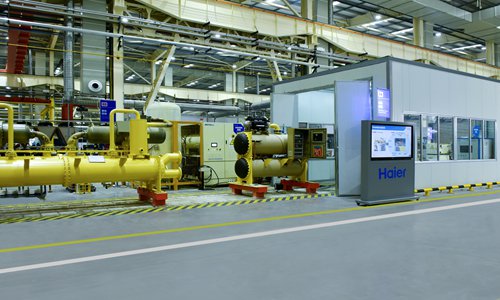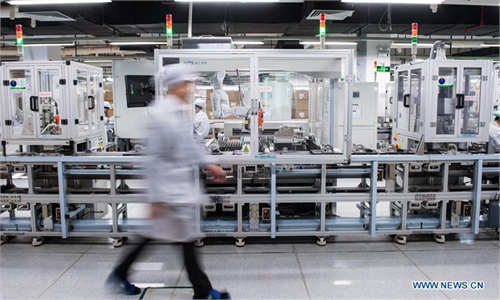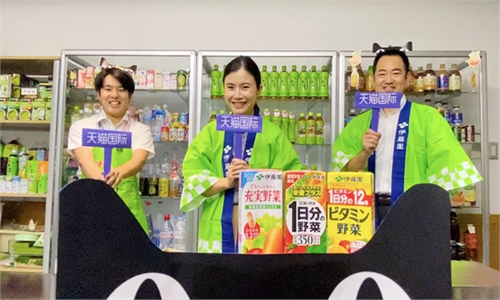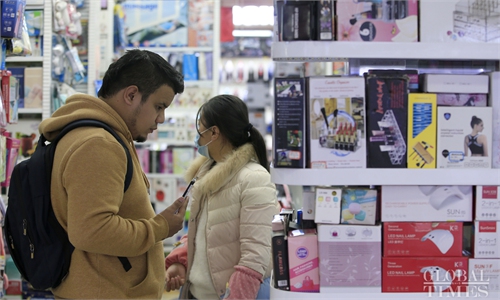SOURCE / INDUSTRIES
Busy factory floors belie awkward reality for China's home appliance OEMs

A view of the Haier factory in Qingdao, East China's Shandong Province Photo: Courtesy of Haier
Industry experts familiar with China's home appliance industry believe it is time for original equipment manufacturers (OEMs) to negotiate with their foreign clients about price hikes, given the recent increase in the costs of raw materials and the yuan appreciation, or they will end up in a wild-goose chase even as overseas orders flow into China.
China's factories have entered their busiest time, after the coronavirus crippled many factories abroad. In November, exports were up 21.1 percent year-on-year, the fastest pace since February 2018.
However, stronger foreign trade figures don't mean a good performance for Chinese OEMs, many of which are struggling at the lower end of the industrial value chain, and they barely survive on thin margins.
The situation has been exacerbated by rising prices for raw materials such as aluminum, copper, steel and plastic -- and a stronger yuan. The currency is at its strongest level since June 2018 after breaking the 6.45/dollar mark on Tuesday.
"Seriously, it could be all for nothing," said Liu Buchen, a home appliance industry analyst with Zhengzhou-based Jiachunqiu Media Institution.
Liu noted that a stronger yuan will cut deep into OEMs' profit margins and if prices are not renegotiated, many companies will go insolvent.
Michael Qi Yong, general manager at consumer electronics distributer Shenzhen Muchen Technology Co, said that his company started to raise prices for its robot vacuum cleaner, forced by rising raw materials and stronger yuan.
Making the problem worse is that price renegotiations are not easy, according to Hong Shibin, executive director of the marketing committee of the China Household Electrical Appliances Association.
"Contracts have already been signed and there is no way to change the price even if the situation has changed," said Hong, noting that companies will add the increased costs to prices when they sign new annual contracts in 2021, but there are some contracts that cannot be changed, and they have to swallow the costs.
Hong told the Global Times that small and medium-sized enterprises are the most affected, since large enterprises and enterprises with their own brands have greater bargaining power.
"The transfer of overseas orders can't alter the fact that 2020 was a dismal year for Chinese home appliance makers," Liu said.
Except for a few successful brands, which have gained footholds in overseas markets with recognizable products, the vast majority of China's home appliance OEMs only enjoy very thin margins, analysts said, and foreign buyers take advantage of the cut-throat competition in China.
Scaling up the value ladder, developing quality products and nurturing brand recognition are essential steps for China's home appliance makers, analysts said. The industry faces a supply glut without the help of overseas markets, and this situation will be the new normal for OEMs after the transfer of overseas orders runs dry.
Liu noted that despite the problems, Chinese brands have made some inroads in overseas markets.
"I believe in three to five years, China will see one or two global brands that can compete head-to-head with the likes of Siemens, SONY and Samsung," Liu said.




